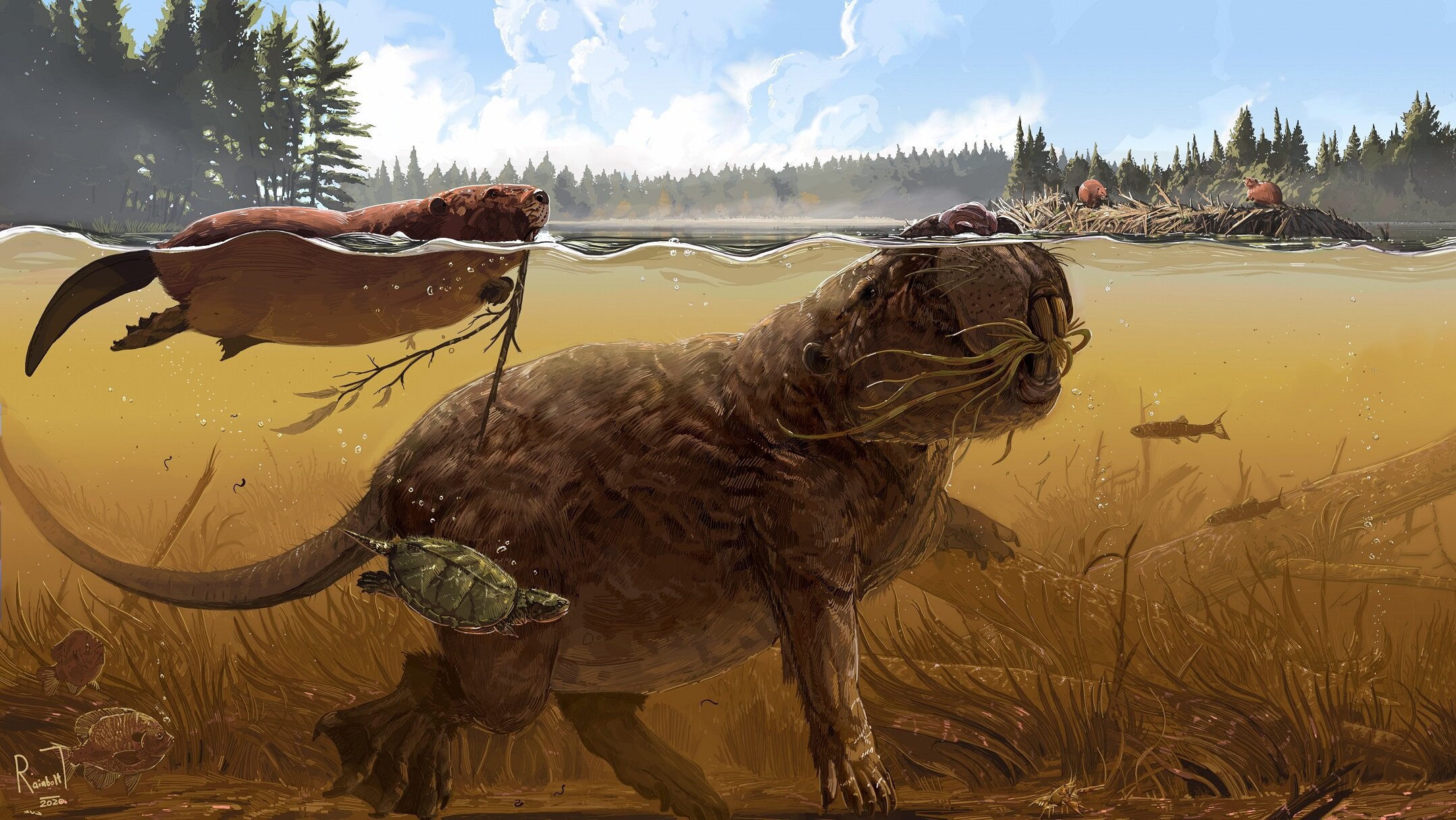Beaver
| Type | Common Beaver | Castoroides |
| Species | rodent | |
| No. Appearing | 2-20 | 2-12 |
| Behaviour | social lodge | |
| Range | taiga, woodland | |
| Size | 24 in. long | 7 ft. long |
| Weight | 55 lbs. | 250 lbs. |
| Intelligence | 1 | 3 |
| Armour Class | 7 | 6 |
| Hit Dice | 1 | 4 |
| Action Points | 4 | 4 |
| Max. Stride | 3 | 5 |
| THAC0 | 20 | 18 |
| Hp/Die | d4 | d8 |
| Attack Form | bite | |
| Damage | 1-6 | 1-6 & 3-12 |
| Special Attack | tail slap | deafness, tail slap |
Beavers are nocturnal, semi-aquatic rodents known for building dams, canals and lodges. They choose a well-watered area in which to settle, altering the landscape, creating large ponds and canals by cut trees, inundating the bottomland and creatin ga large lake. This behaviour makes passage through beaver-occupied lands very difficult and frustrating.
Common Beaver
Common beavers possess stout bodies with large heads, chisel-like incisors, brown or gray fur, hand-like front feet, webbed back feet and a flat, scaly tail. These characteristics make them very well adapted for a mixed land-and-water environment. Their ponds tend to be 10 to 12 feet deep and hundreds of feet across. Families consist of an adult male and female, along with their kits and yearlings. Offspring may continue to serve the same beaver pond as their parents, or may build adjoining ponds that share water sources. Whole beaver "towns" may form if undisturbed, covering areas up to two miles across.
Common beavers aren't aggressive. Encountered out of water, they'll make a stand and be quite dangerous; but unless cornered, giving ground and seek the water at first opportunity.
Defenses
If in water when encountered, the beaver slaps its tail on the water. This creates a loud, hollow sound as it hits the water, calling warning to every other beaver in the pond. Because beavers are nearly invisible in the brush, and are sure to see a character tramping through the trees before they're seen, it's nearly impossible to surprise them. Moreover, the beaver's excellent swimming ability enables it to swim 3 hexes per action point. Their lodge can only be accessed from below the waterline, through a vertical doorway. accessible through an underwater doorway.
Local trappers and hermits count on beavers to give warning if some other stranger or monster enters an area — as beavers grow used to humanoids they see every day. Trappers settle in areas and set up traps, as beaver pelts are valuable; but skilled trappers are careful to take only one skin per beaver family.
Castoroides
Casteroides are bear-sized beavers that are much more able to lope over land. In appearance, they are similar to their smaller brethren, except that they have longer and more powerful jaws. There are sources that claim these creatures have a higher intelligence than usually reported, but this has yet to be firmly established; they are certainly more intelligent than the common form. Casteroides have been seen chittering with one another and organizing themselves when attacking outsiders.
They are very aggressive, chasing and attacking outsiders to drive them off. The tail slap of a casteroides is so loud that it breaks a spellcaster's concentration, actually ruining the casting of a spell. Those within 40 ft. of the slap must save against magic or be deafened for 1-4 rounds, while disoriented so that they're also -2 to hit with weapons.
Some believe the casteroides knows the effect of this slap, and that they time it deliberately. It's clear they use the slap to call others of their kind to join an attack.
See Bestiary

